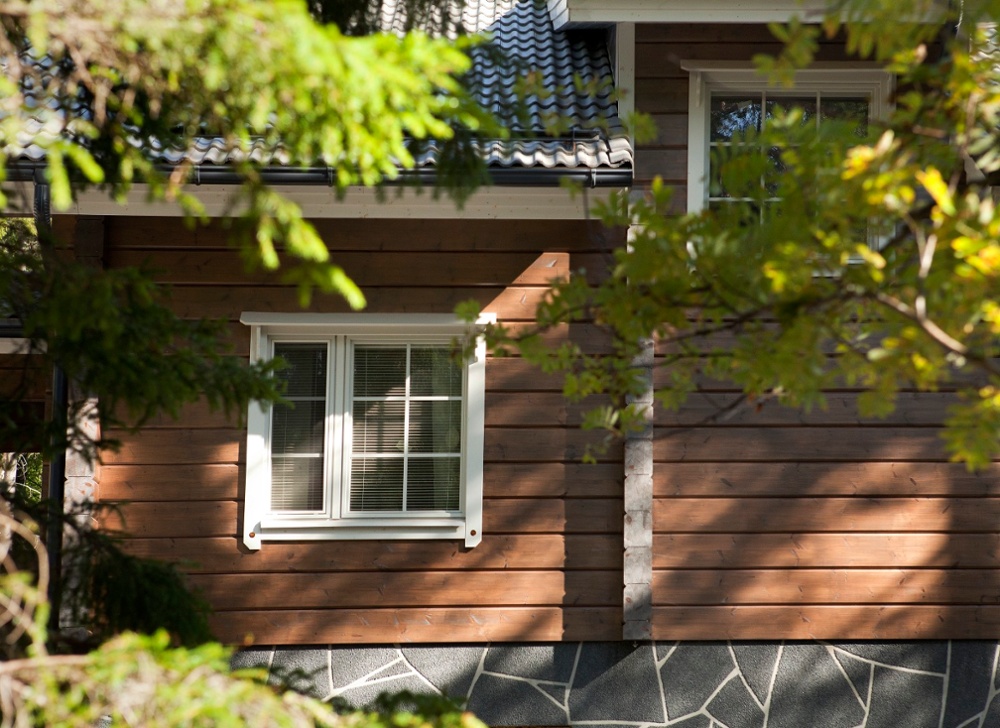
According to estimates, the global population will reach nine billion by 2050, which means an ever-increasing need for construction. Even at the current level, construction uses more raw materials than any other industry – about 50% more when measured by weight.
And with demolition producing around 40–50% of all waste, there’s genuine demand for construction solutions that take the environment into consideration.
Lifecycle thinking takes a holistic view of the entire lifecycle of a building and how to extend it, leading to a smaller environmental impact for the building.
The longer the lifecycle, the greener the building
Lifecycle thinking takes a holistic view of the environmental impact of a product through its entire lifecycle, taking into account both the direct impact resulting from manufacturing the product and the indirect impact realized at different stages of the product lifecycle, from gathering materials to post-manufacture.
In construction, this kind of long-term thinking can significantly improve building ecology. With consistent planning, construction, and maintenance, a building’s lifespan can be significantly extended, leading to more sustainable solutions that will stand the test of time.
In other words, the longer the lifecycle, the greener the building.
Wood is a renewable and sustainable construction material
Wood reduces the environmental burden. The environmental and climate impact of a wooden building over its lifecycle is considerably lower than with other construction materials. Wood is also the most energy-efficient construction material due to the energy recovered during the manufacturing process of wooden products.
Building with wood also mitigates climate change in many ways. A growing, renewable forest is an important carbon sink, storing carbon dioxide emissions. What’s more, the structure of a completed wood building is a long-term carbon sink.
A typical detached wooden house stores roughly 30 tons of atmospheric carbon dioxide, which is equivalent to over 10 years’ worth of carbon dioxide emissions by the average Finnish driver.
Using wood and the right paint provides true durability
If you want a wooden building to last you need to know how to properly protect the surface of the wood. Proper selection of products and maintenance painting can significantly extend the life of a wooden building. With the right products, wood stays in great shape longer – both aesthetically and structurally.
You should always protect and paint wood with the right products, as this is the only way to ensure that the building gets the long lifecycle it deserves. Painting affects wood preservation in many ways:
- It helps preserve the aesthetic appeal of the surface
- It protects the wood and prevents it from cracking
- It prevents blue discoloration and keeps the surface from becoming moldy
- It prevents wooden surfaces from becoming fuzzy.
With the right choice of paint, you can reduce the number of repaints required over 50 years from 13 to just three.
When caring for a wooden building, the choice of colors is essential. If a product does not sufficiently protect the wooden surface, the need for maintenance painting increases significantly.
Comparing three different paint products and the number of required repaints
- Translucent surfaces (depending on what direction they face and the total stress): maintenance painting interval approximately four years, totaling 13 repaints over 50 years.
- Opaque surfaces (low film thickness, poor-quality products with perhaps poor painting choices): maintenance painting interval approximately seven years, totaling eight repaints over 50 years.
- Top-coated products (film thickness 120 µm, high-quality products, good painting job, quality structures): maintenance painting interval approximately 15 years, totaling just three repaints over 50 years.
Tikkurila ProHouse method offers the longest maintenance painting interval
Products finished with the Tikkurila ProHouse method and Tikkurila Ultra Pro paints belong to the third category, providing high-quality protection for wood and the longest maintenance painting interval on the market.
What’s more, a less-frequent painting interval is itself a step towards sustainability as it means:
- Less painting waste is created
- Repaints include fewer polluting work stages
- The building requires less maintenance.
Tikkurila paint products protect wooden buildings effectively, extending their lifespan and ensuring long maintenance painting intervals. This is a step towards more environmentally friendly building and living.
Discover the Tikkurila ProHouse method – helping wood to stand the test of time.


